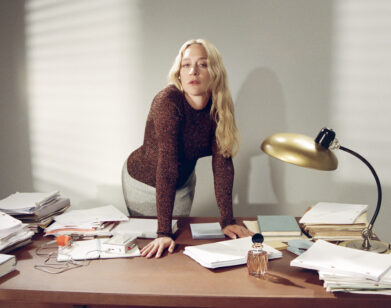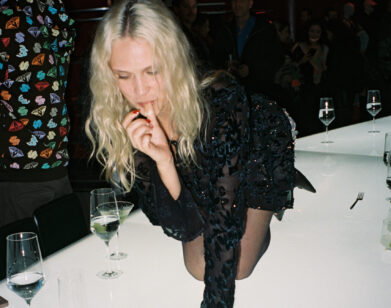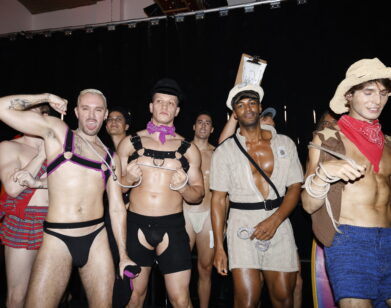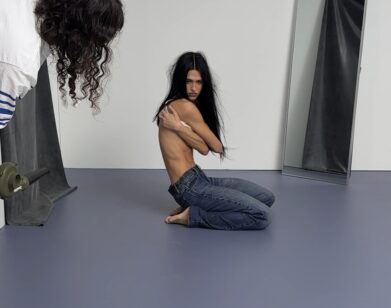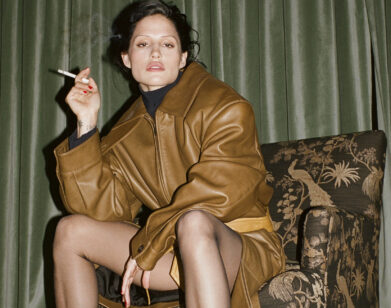Virginie Mouzat
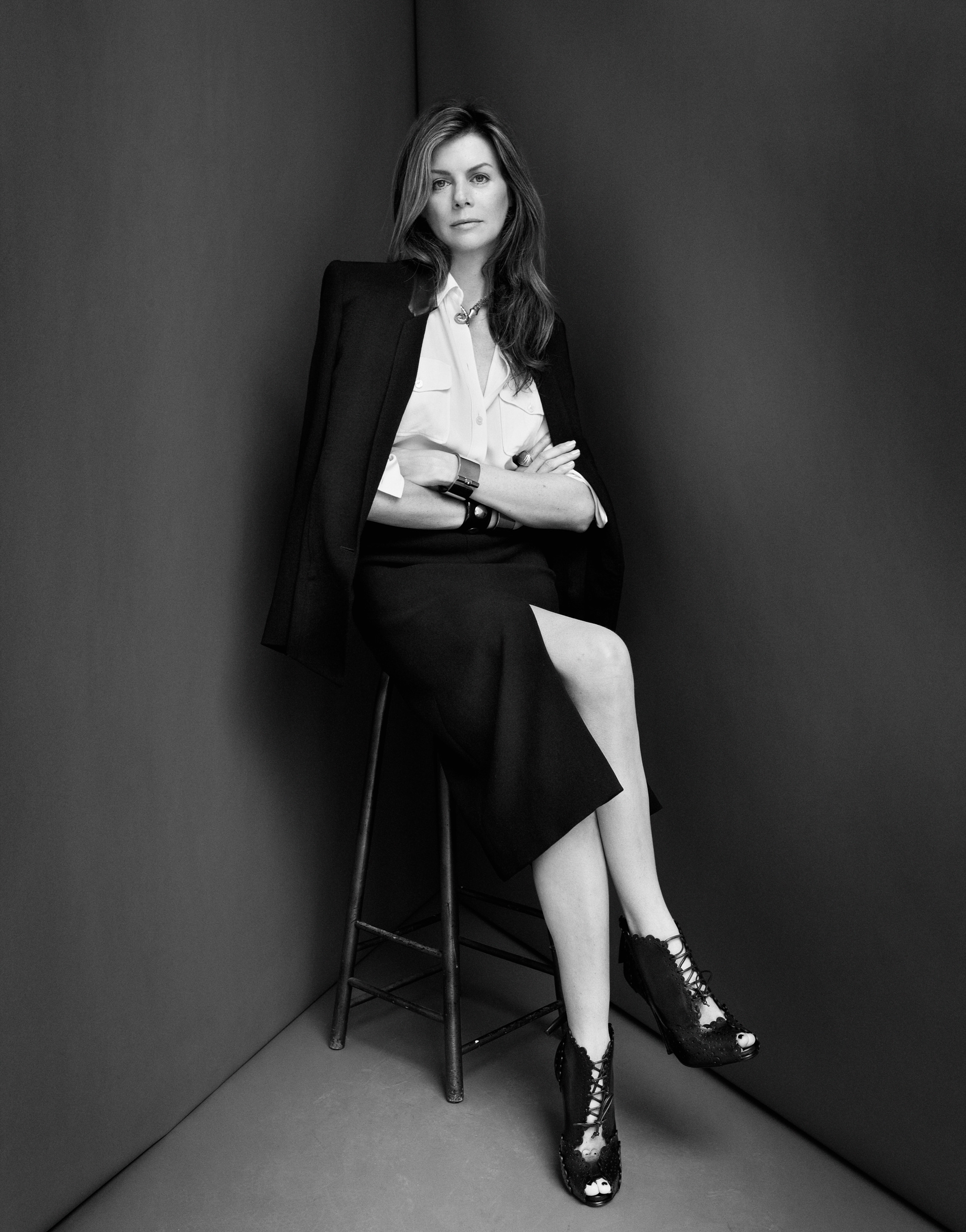
VIRGINIE MOUZAT: Editor in Chief, Luxury/Fashion, Le Figaro. HOME BASE: Paris. PROVENANCE: The Paris suburbs. PAST: Began her career as a model before becoming a freelance writer; joined Le Figaro as beauty editor and later moved over to cover fashion. FIRST ASSIGNMENT ON THE FASHION BEAT: For Le Figaro in 1995. “It was a story about the wedding dress of Justine Lévy, the daughter of Bernard-Henri Lévy.” ON HOW SHE VIEWS HER JOB: “Maybe I am sort of like an archaeologist. People see things and say, It’s yellow and nice. But I’m going to tell them why it’s yellow and why now it’s nice to have yellow—or not nice.”
STEPHEN MOOALLEM: Tell me about making the transition from modeling to journalism.
VIRGINIE MOUZAT: I grew up outside of Paris, in the west suburbs, but I left home when I was 18, with no money, so I started modeling, and this is how I ended up being in fashion—as an object, not as a subject. I’d always been interested in fashion, but fashion in terms of style and ideas—not the latest color or trend or skirt or whatever. It’s more about an intellectual vision of fashion as a way of taking a position in the world. Fashion can emphasize your femininity, or express a certain idea of power. It can be a message towards men—or towards other women. It can be for yourself. It can be all these different things. But I’ve also always known that I wanted to write. So little by little, through various connections and people I knew, I tried a first little article, and then another one, and slowly, little by little, I got going. I continued to write, and, eventually, got a job at Le Figaro, first as beauty editor, and then I moved to fashion.
MOOALLEM: You were involved in Egoïste [the French fashion and culture magazine] for a while, too, right?
MOUZAT: I worked on Egoïste, but it was more because I knew the editor, Nicole Wisniak. I also modeled for Bettina Rheims, the photographer. It was not really a serious job—more like an internship. But I was fascinated by Nicole and Egoïste and the mix of ideas, literature, and images in the magazine.
MOOALLEM: Obviously, the infrastructure that surrounds fashion has become much bigger and more elaborate, and so many collections come wrapped in a kind of business story. What sort of role do you think that has played in how people cover fashion?
MOUZAT: Well, I’ve also always thought it was important to speak to the business side, the ceos. I’ve always spoken to both the ceos and the designers, because if you don’t talk to them both, then you don’t have a complete vision. Behind creation, there is also a very pragmatic vision, and this pragmatic vision couldn’t exist without the artistic vision. So it’s really important to understand both sides. Fashion is a market. You’re selling product. It’s not contemporary art, although even in contemporary art, now, there is a kind of factory system. But fashion . . . In French, we say it’s an art appliqué. It’s a way of practicing art on a very commercial level, which I am never dismissive of.
MOOALLEM: So how do you think that the way the industry itself has evolved has affected the work and the role of designers?
MOUZAT: The turning point for me—at least in France—was when Bernard Arnault bought Christian Dior and got LVMH. It changed everything—the profiles of the ceos, the profiles of the designers. Suddenly, becoming a designer was not a destiny. It was a job. Designers now have to not only be creative, but also businessmen and businesswomen. They have to have a wider vision than just designing dresses. Some of them stay at a certain level—and good for them because maybe it’s more quiet. But now all of them have to have a very broad understanding of the whole business.
MOOALLEM: And it’s a business that has become much more complex and pressure-packed.
MOUZAT: Well, some designers were able to convert their job into being more of an art director, and to embrace this wider mission that I was speaking about. But then we saw that with some of the designers, the same energy they were generating with their work wound up destroying them. But for sure the amount of pressure on them has increased so ferociously in the last 15 years that it can kill someone—I mean, professionally. I think one of the worst symptoms of this was the John Galliano thing. It was bad and damaging and sad, but it also pointed out the human side that everyone forgot. It was such a harsh reminder of, “These people are not machines.” The world entered an austerity period because of the financial crisis, but maybe this did something similar for fashion. Maybe fashion will go back to what it should be: designers delivering good work with vision, who are into fashion and not only into being pop stars. In a way, it might have cleared the air a bit. The fact that now it’s Raf Simons at Dior and Hedi Slimane at YSL—there’s a certain wisdom in these guys. They’re not pop stars. But there’s nothing easy for these people. They’re very exposed. They have a lot of pressure. And the magic—and the torture of it—is to maintain the fantasy inside of this pressure.
MOOALLEM: What is the most innovative or radical thing you’ve seen a designer or a house do recently?
MOUZAT: Well, haute couture is always a very tricky thing because it is old-fashioned, it’s traditional, it’s only in Paris—fine, okay. But it’s also an exceptional moment. It’s a laboratory. There are no trends. So you can’t relate it to a market. So when Riccardo Tisci at Givenchy decided to show his haute couture collection like an installation, I thought it was a very good idea. You could approach the dresses—you could almost touch them. You can see all the details. You could take your time and walk around. And it was in a beautiful place, at the Hôtel d’Évreux. So I thought that this could maybe be the future of the haute couture. But when you speak about “future” in fashion, it doesn’t mean anything, because this future collapses after a few seasons. Fashion is based on seasons, and another season makes the previous one obsolete. So even though it’s always beautiful, Riccardo should change something, because with the installation you miss the human presence, the body. So now it would be interesting to think about going back to a show, but maybe a different kind of show—I don’t know what kind. But what’s interesting in fashion is that what was surprising and new very quickly becomes expected and not so new.
MOALLEM: What do you think is missing from fashion right now?
MOUZAT: A lot of the time, you miss the words of the designers. Some of them are very good at that. The young one, Guillaume Henry, at Carven, when he speaks about fashion—what he wants to do, his vision—it’s very interesting. It brings a humanity to it. So that’s missing somewhere, especially in this period of time where things go faster and faster, and it’s all about images and surface. Suddenly, words could be a way of bringing back meaning.
MOOALLEM: What would you like to see less of?
MOUZAT: Oh, lots of things . . . Maybe fashion itself. Less fashion in fashion could be not bad.
For more on The Observers, click here.

